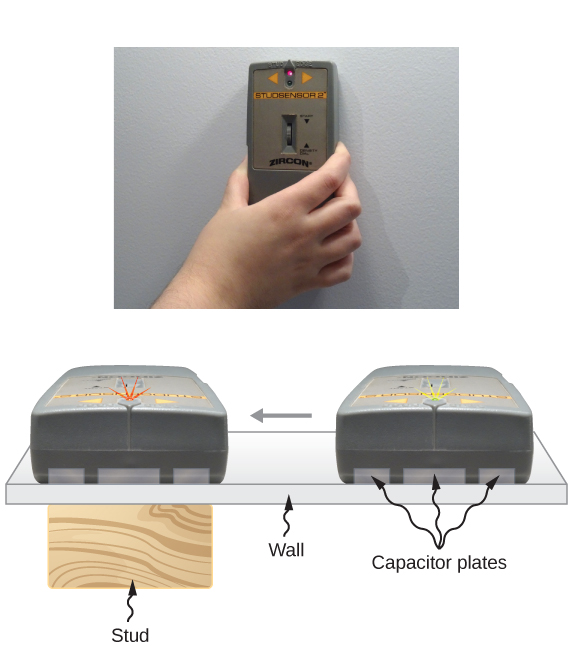| << Chapter < Page | Chapter >> Page > |

The electrical energy stored by a capacitor is also affected by the presence of a dielectric. When the energy stored in an empty capacitor is , the energy U stored in a capacitor with a dielectric is smaller by a factor of ,
As a dielectric material sample is brought near an empty charged capacitor, the sample reacts to the electrical field of the charges on the capacitor plates. Just as we learned in Electric Charges and Fields on electrostatics, there will be the induced charges on the surface of the sample; however, they are not free charges like in a conductor, because a perfect insulator does not have freely moving charges. These induced charges on the dielectric surface are of an opposite sign to the free charges on the plates of the capacitor, and so they are attracted by the free charges on the plates. Consequently, the dielectric is “pulled” into the gap, and the work to polarize the dielectric material between the plates is done at the expense of the stored electrical energy, which is reduced, in accordance with [link] .
Check Your Understanding When a dielectric is inserted into an isolated and charged capacitor, the stored energy decreases to 33% of its original value. (a) What is the dielectric constant? (b) How does the capacitance change?
a. 3.0; b.
Discuss what would happen if a conducting slab rather than a dielectric were inserted into the gap between the capacitor plates.
answers may vary
Discuss how the energy stored in an empty but charged capacitor changes when a dielectric is inserted if (a) the capacitor is isolated so that its charge does not change; (b) the capacitor remains connected to a battery so that the potential difference between its plates does not change.
Show that for a given dielectric material, the maximum energy a parallel-plate capacitor can store is directly proportional to the volume of dielectric.
An air-filled capacitor is made from two flat parallel plates 1.0 mm apart. The inside area of each plate is . (a) What is the capacitance of this set of plates? (b) If the region between the plates is filled with a material whose dielectric constant is 6.0, what is the new capacitance?
a. 7.1 pF; b. 42 pF
A capacitor is made from two concentric spheres, one with radius 5.00 cm, the other with radius 8.00 cm. (a) What is the capacitance of this set of conductors? (b) If the region between the conductors is filled with a material whose dielectric constant is 6.00, what is the capacitance of the system?
A parallel-plate capacitor has charge of magnitude on each plate and capacitance when there is air between the plates. The plates are separated by 2.00 mm. With the charge on the plates kept constant, a dielectric with is inserted between the plates, completely filling the volume between the plates. (a) What is the potential difference between the plates of the capacitor, before and after the dielectric has been inserted? (b) What is the electrical field at the point midway between the plates before and after the dielectric is inserted?
a. before 3.00 V; after 0.600 V; b. before 1500 V/m; after 300 V/m
Some cell walls in the human body have a layer of negative charge on the inside surface. Suppose that the surface charge densities are , the cell wall is thick, and the cell wall material has a dielectric constant of . (a) Find the magnitude of the electric field in the wall between two charge layers. (b) Find the potential difference between the inside and the outside of the cell. Which is at higher potential? (c) A typical cell in the human body has volume Estimate the total electrical field energy stored in the wall of a cell of this size when assuming that the cell is spherical. ( Hint : Calculate the volume of the cell wall.)
A parallel-plate capacitor with only air between its plates is charged by connecting the capacitor to a battery. The capacitor is then disconnected from the battery, without any of the charge leaving the plates. (a) A voltmeter reads 45.0 V when placed across the capacitor. When a dielectric is inserted between the plates, completely filling the space, the voltmeter reads 11.5 V. What is the dielectric constant of the material? (b) What will the voltmeter read if the dielectric is now pulled away out so it fills only one-third of the space between the plates?
a. 3.91; b. 22.8 V

Notification Switch
Would you like to follow the 'University physics volume 2' conversation and receive update notifications?